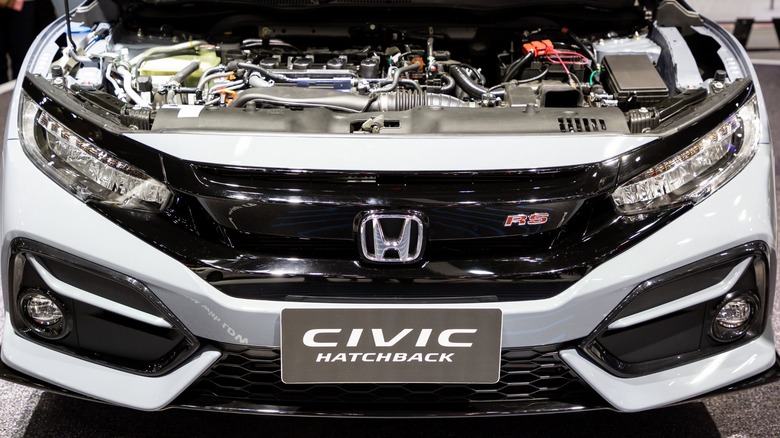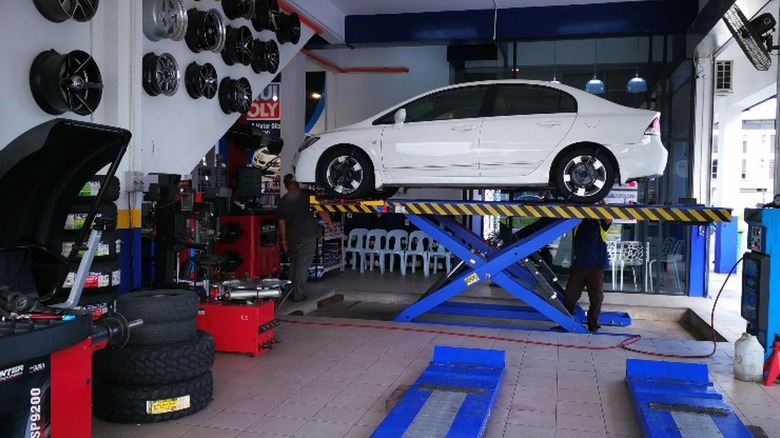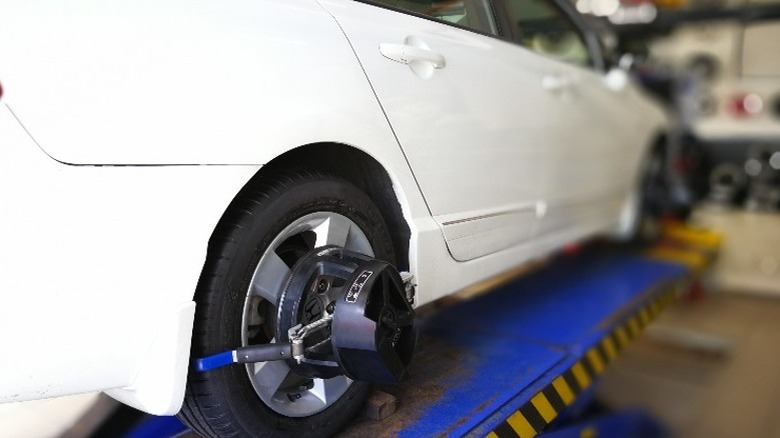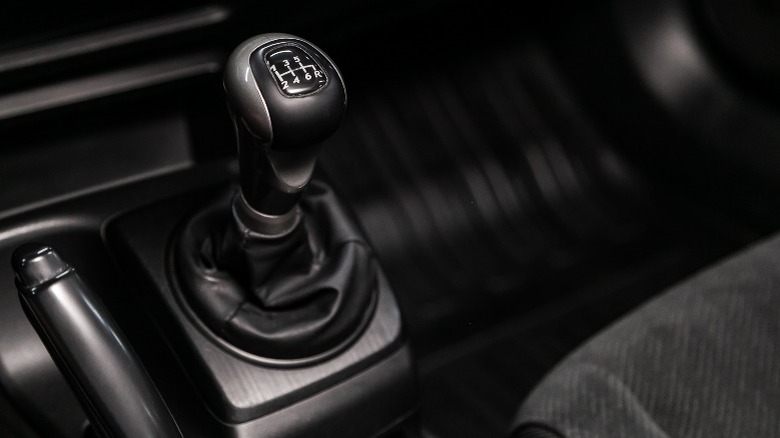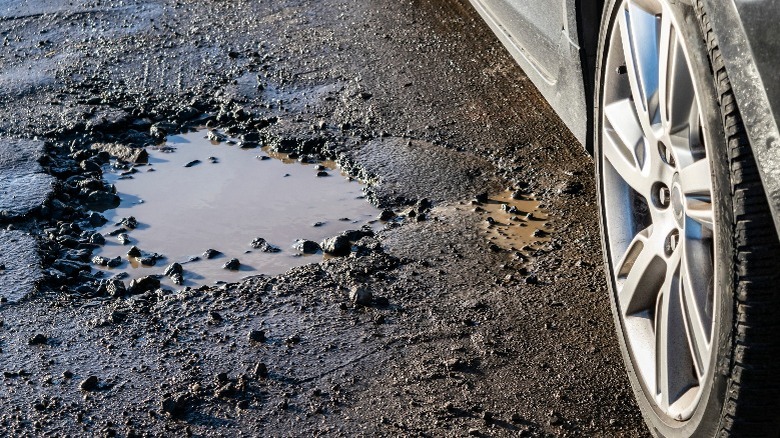Maintenance Tips To Help Increase The Longevity Of Your Honda Civic
Japanese car brands have been a force to be reckoned with on the world automotive stage thanks to their reliability. Honda is one such brand that has embraced this philosophy of consistency, placing it at the top of the list of the most reliable car brands ever. Regardless, few cars in Honda's lineup embody reliability more than the Honda Civic. Historically, a Honda Civic could reach (or even surpass) 200,000 miles and 20 years before giving up or needing serious repairs, and many of its model years have scored well for safety, practicality, and reliability.
However, while reliable cars are built with the expectation of abuse, only a well-maintained Honda Civic will get you to that 200,000-mile mark. A regular, timely maintenance schedule and good driving habits are the best ways to have a Civic you can pass down to another generation.
We've compiled some important tips you should use to increase the longevity of your car. Most of the tips here can also be applied to other vehicles, but we added a few Civic-specific tidbits you may want to consider if you're a Honda driver.
Follow a frequent maintenance schedule
Many Honda service centers and blog recommend that you get your car serviced every 7,500 miles. Planet Honda, however, offers some specific guidance:
-
Every 15,000 miles, starting from 7,500 miles, you ought to check the car's oil, inspect the brakes, replace the car fluids, and rotate and inspect the tires. If you have an older model Honda Civic, you might also need to lubricate the throttle linkage.
-
Every 30,000 miles, starting at 15,000 miles, you should do everything suggested above and inspect the parking brake, clean the fuel systems, lubricate the hinges and chassis, change windshield wipers, service the air conditioning and heater, test the gearbox and steering wheel, replace the oil drain plug, conduct a lights inspection, replace the spark plugs, inspect the shocks, re-torque the driveshaft bolt, service the transmission, balance the wheels, check the clutch pedal (for manual Civics), and inspect the differential oil.
-
Every 30,000 miles, starting at 30,000 miles, do both above bullet points and service the proportional control valve (PCV), service the battery and its cables, check the fuel tank cap gasket, inspect the interior and exterior lights, inspect the air filters, oil the propeller shaft and wheel bearings, give the car a road and quality control test, and inspect the fuel lines.
Car and Driver suggests that the average person drives over 1,000 miles monthly. Based on this estimate, your daily driver Honda Civic should go in for maintenance roughly twice every year.
Observe proper tire maintenance and rotation
Tire rotation should be a core part of your Civic's recurring 7,500-mile maintenance. Nonetheless, it's something you'll want to keep an eye on regardless. That's because bad tires or uneven tire wear could spell an early end for your Honda Civic. Since tires are parts you could possibly get secondhand, they may be due for changing before your next scheduled service date. The NHTSA also recommends you rotate your tires every 5,000 to 8,000 miles.
All production Civics — even the sporty 315 hp Honda Civic Type R — use a front-wheel drive (FWD) drivetrain. This means that the tires in the front will wear faster than the back pair. The NHTSA recommends you move your front tires directly to the back, then swap your left back tire to the front right and the right back tire to the front left.
If your tires wear unevenly faster than normal, it can indicate alignment issues. Take your car to a qualified expert to be fixed. Serious cases of uneven tire tread wear can result in loss of fuel efficiency, rattling, suspension issues, bad traction, among other things. All of these will snowball into less total mileage potential for your Honda Civic.
Adopt proper driving habits
Proper driving habits put less stress on your Civic's parts and will lower the need for replacements and servicing. As a general rule, it's bad driving practice to accelerate and brake suddenly. Not only does this wear your brake pads, rotors, and tire treads quicker, but it could push parts into positions they shouldn't be in, damaging them. There are more obvious rules, of course, like never exceeding your car's maximum payload or towing capacity and never ignoring a check engine light on the dashboard.
For manual Civics, there are a plethora of bad habits you should watch out for. Some important ones you should know are: don't shift gears too early, don't switch from drive to reverse without coming to a complete stop, don't rev too high while in low gear, and don't leave your foot on the clutch after changing gear. All of these things will wear out your car's drivetrain, transmission, and engine much faster.
Another important driving habit is never driving your Honda Civic with a low gas tank. Driving around with a low tank means that your Civic will likely draw in dregs at the bottom of your tank and clog or damage something. Gas also acts as a coolant for your fuel pump, and it can overheat when you use it with low fuel. Hondas are among the most fuel-efficient cars but try to ensure your tank is at least half full at all times.
Avoid rough terrains, bad roads, and rust
It's a Honda Civic, not an overland Honda Ridgeline, so don't drive it like one if you would like it to last long. For example, rushing through speed bumps in a low-clearance vehicle like a Civic can damage the car's undercarriage, wheels, tires, and suspension.
If you live in an area where you must travel off-road constantly, it may be worth it to change your Civic or modify it. The same applies in areas with bad roads. Potholes are one of the things that can cause tire failure and other issues listed earlier. Driving harshly on these bad roads will cause excessive wear, reducing your car's lifespan.
Another thing that can eat at your car's durability is rust. It won't be an issue for most people, but it is for Civic owners who live in coastal areas and snowy climates. The seawater is rich in salt, and the atmosphere could have a high salt concentration. Snowy areas, on the other hand, use salt to melt snow and ice on the roads, which could also be really bad for your car.
You can combat rust by cleaning and waxing your Civic body paint and ensuring there are no deep scratches in the metal that the salt can latch onto. You should also clean the car's undercarriage often, as that's the most sensitive and critical spot for rust. While you're at it, check that the Civic's wheel wells (the spot above the wheels) plastic covering is well-set since rust could also get in there.
